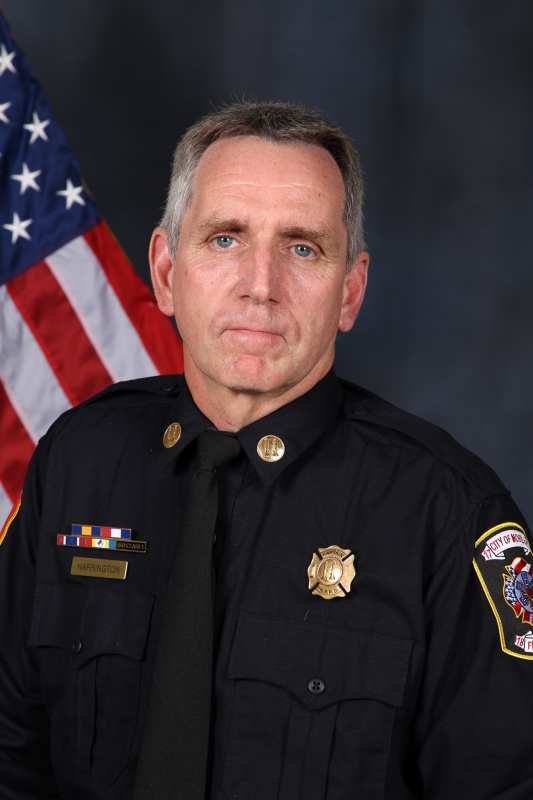 District Chief Michael Harrington leads the day-to-day operations of the Fire Communications Division, assisted by 5 Communications Officers, one technical specialist, 3 Public Safety Dispatcher-IIs and 10 Public Safety Dispatchers.
District Chief Michael Harrington leads the day-to-day operations of the Fire Communications Division, assisted by 5 Communications Officers, one technical specialist, 3 Public Safety Dispatcher-IIs and 10 Public Safety Dispatchers.
Fire Communications is the gateway between a citizen’s emergency call and the firefighters or paramedics that respond. The team works in the Mobile County Communications District (E-911 Center) located at 7340 Zeigler Boulevard in west Mobile. Mobile County has a single Public Safety Answering Point (PSAP) and Mobile Fire-Rescue processes and dispatches all emergency medical and fire calls for service in the City of Mobile. Citizens with non-emergency requests can call 251-208-7311 for assistance.
All dispatch personnel are certified as Emergency Medical Dispatchers and Emergency Fire Dispatchers through the National Academy of Emergency Dispatch, APCO Public Safety Telecommunicator and Fire Service Communications. The Priority Dispatch System is used to process all emergency calls and categorize them in such a way that the most appropriate resources are dispatched to an emergency. Classroom training is approximately 8 weeks with the Training Coordinator, and tandem training with a training officer at a dispatch position could last as long as 6 months.
The dispatch center is staffed 24/7. Our Public Safety Dispatchers are under tremendous pressure to ascertain appropriate information from callers while maintaining a professional and calm demeanor. They are skilled in the geography of the city, response areas, and hundreds of landmarks. The work environment is fast-paced, stressful, and demanding, and rapid decision making is essential. While very challenging, the work is very rewarding. If you are interested in applying for the position of Public Safety Dispatcher, visit the Job Opps page on the Mobile County Personnel Board website.
Technology is a large part of Fire Communications. The Hexagon/Intergraph CAD is the primary system used for entering calls for service and tracking unit status. GPS integration allows dispatchers to track the location of all emergency vehicles so that the closest unit can be dispatched to an emergency. Solacom’s Guardian 9-1-1 call handing solution (telephone system) is used to process all calls for service. In addition to emergency and non-emergency call taking, this system has the capability to integrate next generation 9-1-1 services including text messaging, pictures, and video.
Mobile Fire-Rescue uses Locution Systems Cadvoice for automated dispatch and fire station alerting. The system allows MFRD Dispatchers to alert multiple fire stations and units simultaneously of emergency calls, thereby reducing response times. MFRD uses the Mobile County 700 MHz P25 radio system (TDMA). The radio system is owned by the 9-1-1 District and is used by all public safety agencies in Mobile County. The system includes 11 transmitter sites, 8 of which are in simulcast configuration and 3 in multisite configuration for exceptional coverage. You can listen to Mobile Fire-Rescue radio traffic on Broadcastify.com. Mobile data computers with specialized software receives dispatch information and is quickly sent automatically to responding units. A mapping component allows for a recommended route from the fire or EMS unit’s location to the emergency scene. Additional information is provided to responders on the MDT screen during their response.
Quality assurance and quality improvement are important components of ensuring that the services provided exceed the expectations of the public. The Communications Division has 3 officers certified in EMD Quality Assurance and EFD Quality Assurance. A random sample of emergency calls are reviewed and scored each week with feedback provided to the dispatcher.
MFRD Communications received approximately 46,000 emergency 9-1-1 calls and 49,000 non-emergency/administrative calls in 2017. Ninety-nine percent of emergency calls were answered in less than 15 seconds.
The following tips can help dispatchers process your call faster:
1. Knowing your location is the most important piece of information we need. The use of a cellular phone does not provide a precise location, so be prepared to verify your location more than once. In addition to a physical street address, if applicable, you will be asked for business names, apartment and building numbers/letters or any other information that will help firefighters and paramedics reach you. The dispatcher will ask to verify your phone number in case a callback is necessary or if the line is disconnected during your call.
2. Speak clearly and slowly so that the dispatcher can understand you. Stay calm and answer all of the call takers questions. While questions may not seem relevant, they are important to ensure that the appropriate resources are being sent to you. Answering those important questions do not slow down the response to your emergency. The call taker may give you some instructions that will help and will encourage you to call back if the condition worsens before arrival of the responders.
For Emergencies, Dial 9-1-1. For Non-Emergencies, Dial (251) 208-7311.
